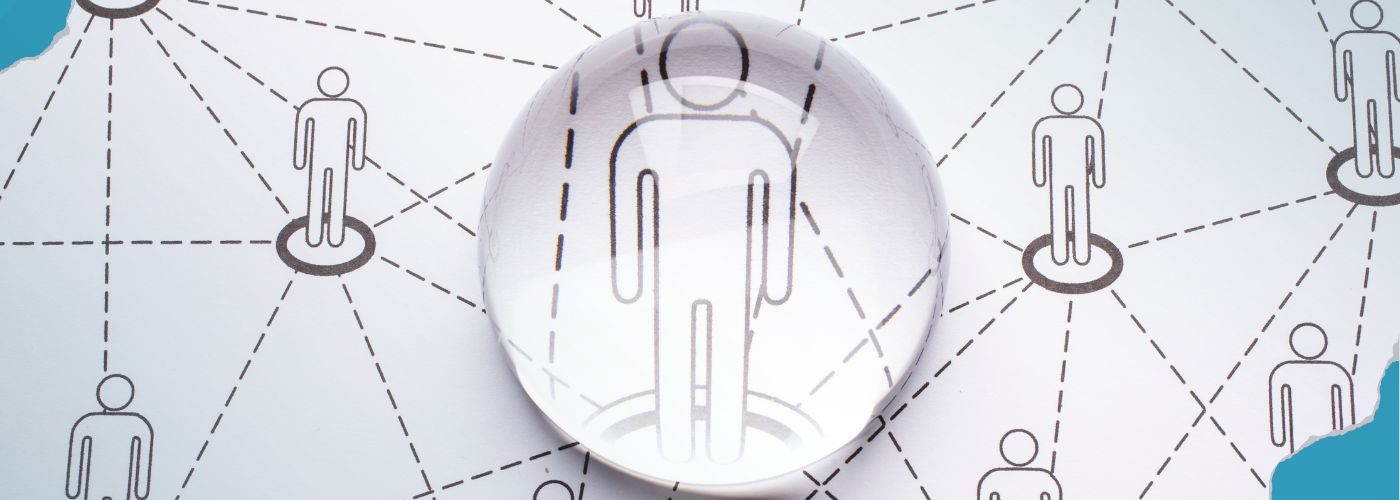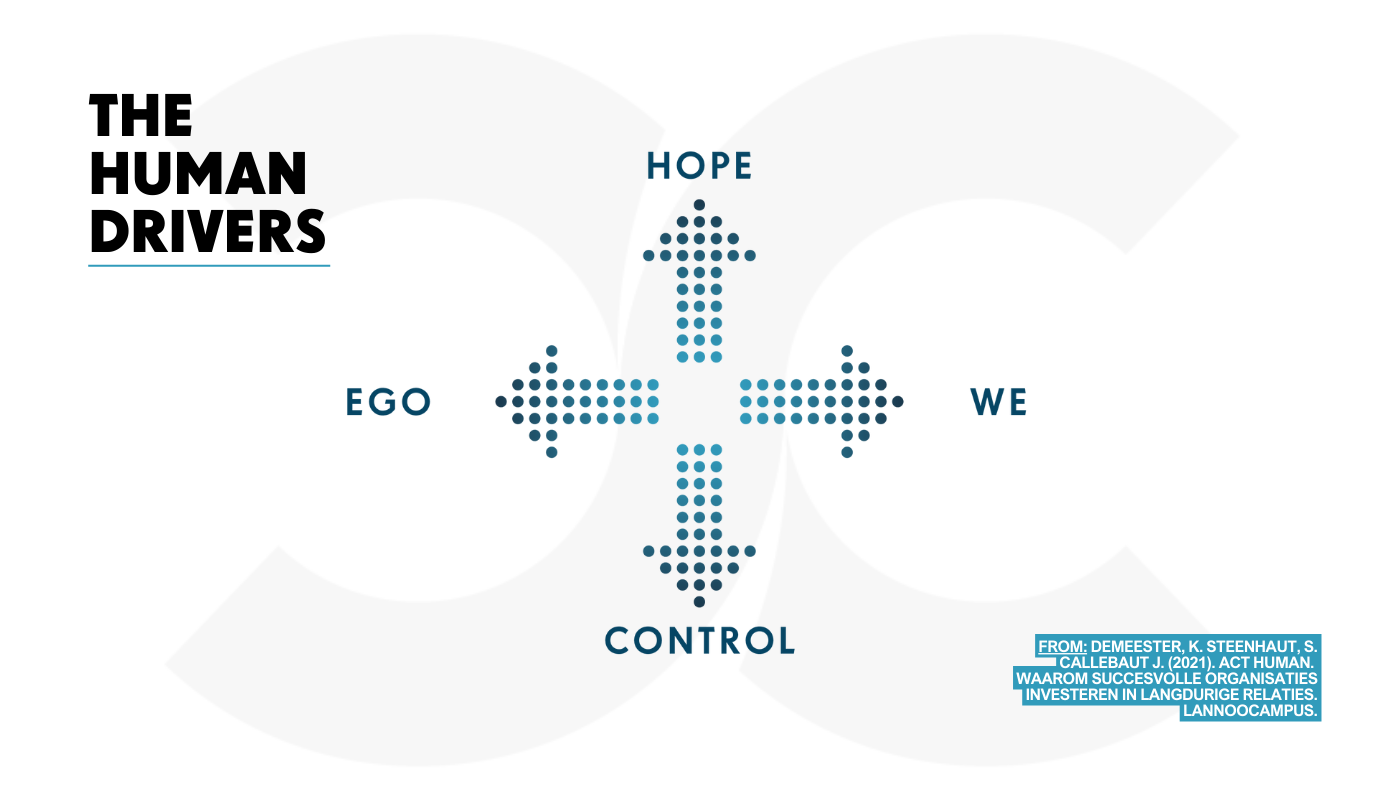16.06.23

16.06.23

Successful brands or organisations consider their customers as human beings. They try to understand them and identify their needs. They strive to better anticipate changing circumstances and predict how needs will change. In short, they build and maintain relationships with these people, as human beings.
To build those successful, long-term relationships with your customers, but just as well suppliers, partners, employees & stakeholders, the first step is: understanding those possible types of relationships. And here Human Drivers are the starting point.
It is our belief that every human being strives to build and maintain meaningful relationships. This can be as a consumer, business leader, stakeholder, marketer and so on. People want to connect with the outside world. Of course, they each do so in their own way. This is also the case for our customers. Their behaviour is mainly determined by the way they shape their relationships. Here, we distinguish four deeper drivers – the Human Drivers – that we believe determine the nature of the relationship.
To define these, we need to answer two key questions:
To find these answers, we need to look beyond what big data provides us. Descriptive data is useful, but this needs to be complemented by a deeper understanding of these Human Drivers of our client. These are the starting point for your strategic choices and for an Act Human translation of your marketing approach.
Products, services and brands help consumers feel better, connect with their environment and express who they (want to) be. So we approach a brand as it would a person. Consequently, it is a metaphor for a relationship.
We believe marketing is essentially about establishing and maintaining these relationships. The late Jan Callebaut and Hendrik Hendrickx pioneered this approach in the 1980s. They introduced different personality profiles which allowed mapping the different expectation patterns of consumers. Thus, the purely sociodemographic profiling common at the time was extended to profiling based on emotional, subjective expectations. This translated concretely into, what we today call, personas to describe particular target groups.
People are constantly searching for the same basic needs: fighting their fears – or protecting themselves from them – and realising their desires. To sell products and services, marketing capitalises on those basic needs. Do we reach the individual with a solution that strengthens his ego feelings, so that he feels better about himself or his beliefs? Or do we reach out to him with solutions to feel better connected to the group (family, friends, fellow villagers …)?
The model below helps to identify these different underlying drivers and their relationships and clarify how marketing can respond to them. We call these the Human Drivers because they reveal the deeper, underlying human needs. This model provides a framework when working out brand positioning and related marketing communications and thus also to the overall business strategy.

Rather than selling a product or service, we should focus on offering a state of mind. ‘People don’t buy products, they buy better versions of themselves.’ Or, as a cosmetics manufacturer once said: ‘In the factory we make cosmetics, but in the store we sell hope.’
A state of mind is never static, but is always influenced partially by the evolving context. This means that Human Drivers can have different meanings in different situations. It remains a work in progress, just because people and their drivers evolve over time.
Example
A car in one context can be an expression of the hope of being seen as successful – I can afford this, so I am successful – while in another context it is a solution to the desire for control – I want to take my children to school in a safe way.
To stay relevant and stay ahead, brands need to evolve with these changing contexts and people. They must first ask themselves what exactly is the customer looking for in that situation or product? Is he looking for hope and innovation, or rather security and control? In addition, the question arises as to how the customer relates to a situation or product. Is the focus mainly on himself as an individual (ego) or does he want to join a group, a community (we)?
It is important to stress that an individual can pursue these four different forms of relationships simultaneously or alternately. A person enters into different types of relationships depending on the context and his or her emotional state at the time. For instance, a person may well have a hope-driven relationship in terms of his cultural experiences and a control-driven relationship in the work environment.
By understanding Human Drivers, you gain insight into what customers are looking for in the relationship with your brand. And that is the starting point for approaching brands as human beings who are striving to build long-term, meaningful relationships with their customers and stakeholders.
Explore how your brand or organisation can adopt an Act Human approach? Gain concrete insight into what drives your customers or employees, and how you can offer a meaningful response? Let’s talk!
Article based on : Demeester, K. Steenhaut, S. Callebaut J. (2021). Act Human. Waarom succesvolle organisaties investeren in langdurige relaties. LannooCampus.